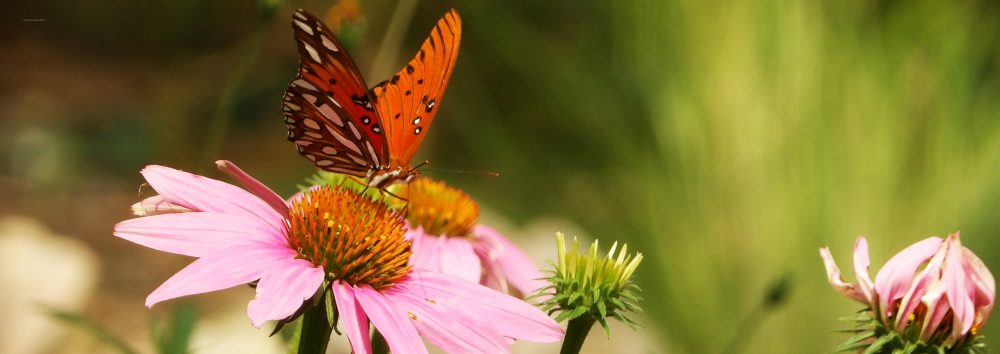I’ve written about Inland Sea Oats (Chasmanthium latifolium) previously, but didn’t have photos of these plants during spring to share with readers. Inland Sea Oats is a native grass which is elegant, easy to grow and an excellent choice for the shady garden. You can read about this plant further in my post at: https://mygardenersays.wordpress.com/category/inland-sea-oats/.
This is what one group looked like in March,
and what they look like more recently.
Inland Sea Oats die back during the winter and arise from their roots in spring . As a general rule, once they emerge from their winter doldrums, they grow quickly.
The green of the Inland Sea Oats is brilliant and dramatic,
and pairs well with evergreens such as Giant Liriope (Liriope muscari ‘Evergreen Giant’), Cast Iron Plant (Aspidistra elatior) 
and Rock Rose (Pavonia lasiopetala).
In late March-April, the graceful seedheads develop,
and remain a fetching, translucent green throughout the summer. In the late summer, the seeds turn a soft cream color and later in the fall, a warm, toasty brown.
Watch out in spring though, for the proliferation of Sea Oat seedlings.
It’s a great plant for the home gardener, but with regular irrigation and/or rainfall, these seedlings can be a nuisance. To keep them in control, I simply pull them up as I have the time and inclination. As long as you don’t allow them to become too tall (more than a foot), they’re easy to yank out. However, if you’re not willing to engage in some maintenance with these plants (weeding them!), I wouldn’t recommend Inland Sea Oats for your garden.
But if you’re willing to weed what you don’t want and you love the grace and beauty of this shade loving, ornamental grass,
plant and enjoy!











This is a great plant, yours are a nice size and very pretty color. We don’t have a problem with seedlings yet, so far so good.
I added the variegated ones in the fall, they seem to be slower growing.
LikeLike
I remember that you wrote about the variegated ones–they’re lovely and I’ve seen them here in Austin at a nursery. I wish I had room for them. The Inland Sea Oats is also considered to be a good erosion control plant, so that’s helpful for those on slopes. And just wait, you’ll get seedlings!
LikeLike
I’m a big fan of the sea oats as well. I agree, with a little attention to seedlings, they can be corralled fairly easily. One of my favorite aspects of this plant is that the deer don’t bother them. I have a patch out front that is slowly spreading to fully cover an area, and my freelance deer landscapers haven’t done anything other than walk through and help spread the seed heads. Win/win.
LikeLike
I love that-“freelance deer landscapers.” It’s a great plant and so useful in so many ways!
LikeLike
I love the seed heads on this plant. I get some little seedlings, but no too much. I’ll be digging some up to share soon. Another nice benefit of this plant.
LikeLike
Ally, I’m glad you like this plant as much as I do. And, it is a great pass-a-long plant.
LikeLike